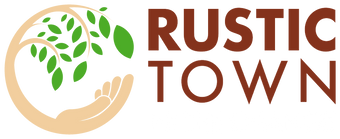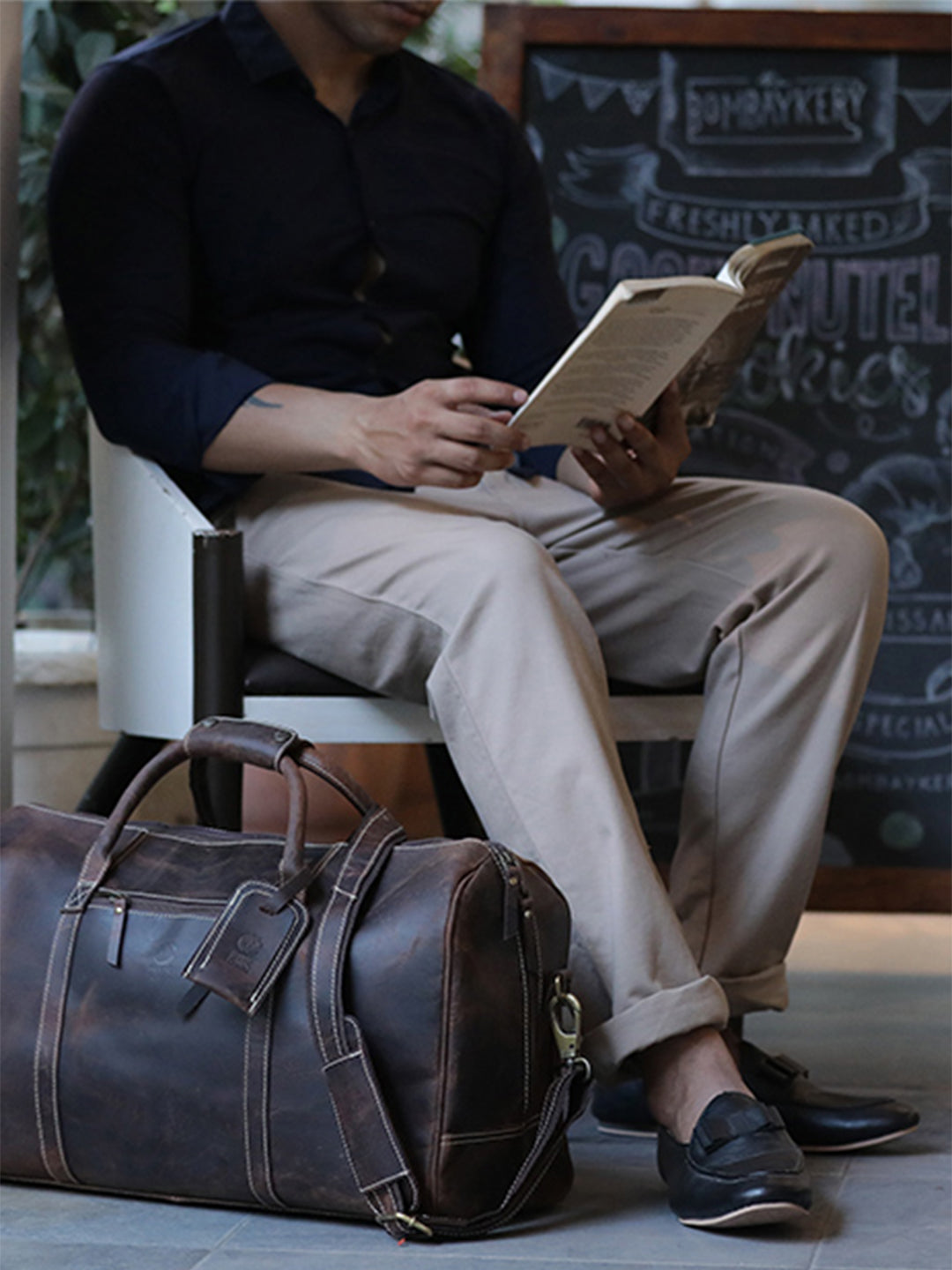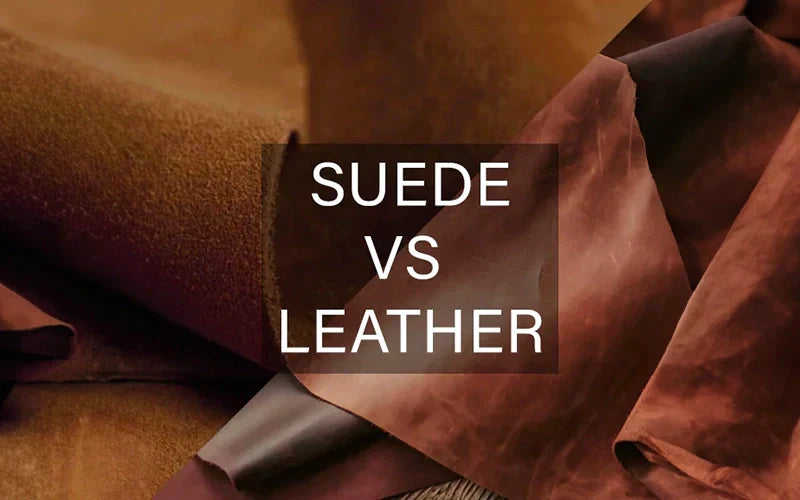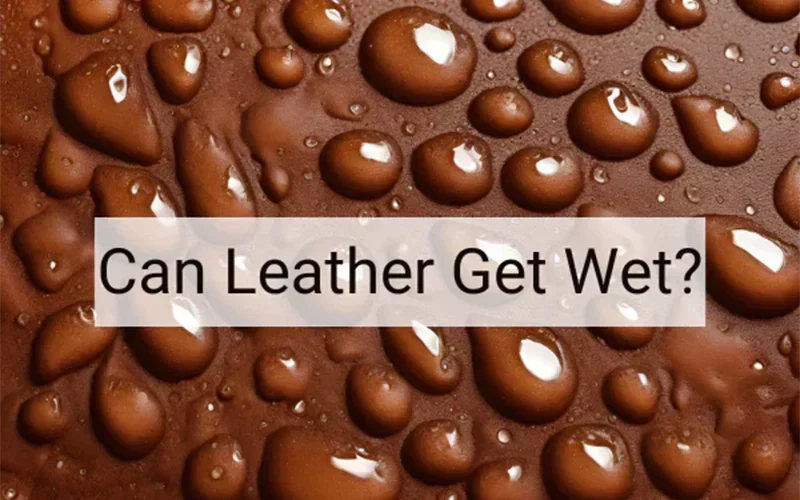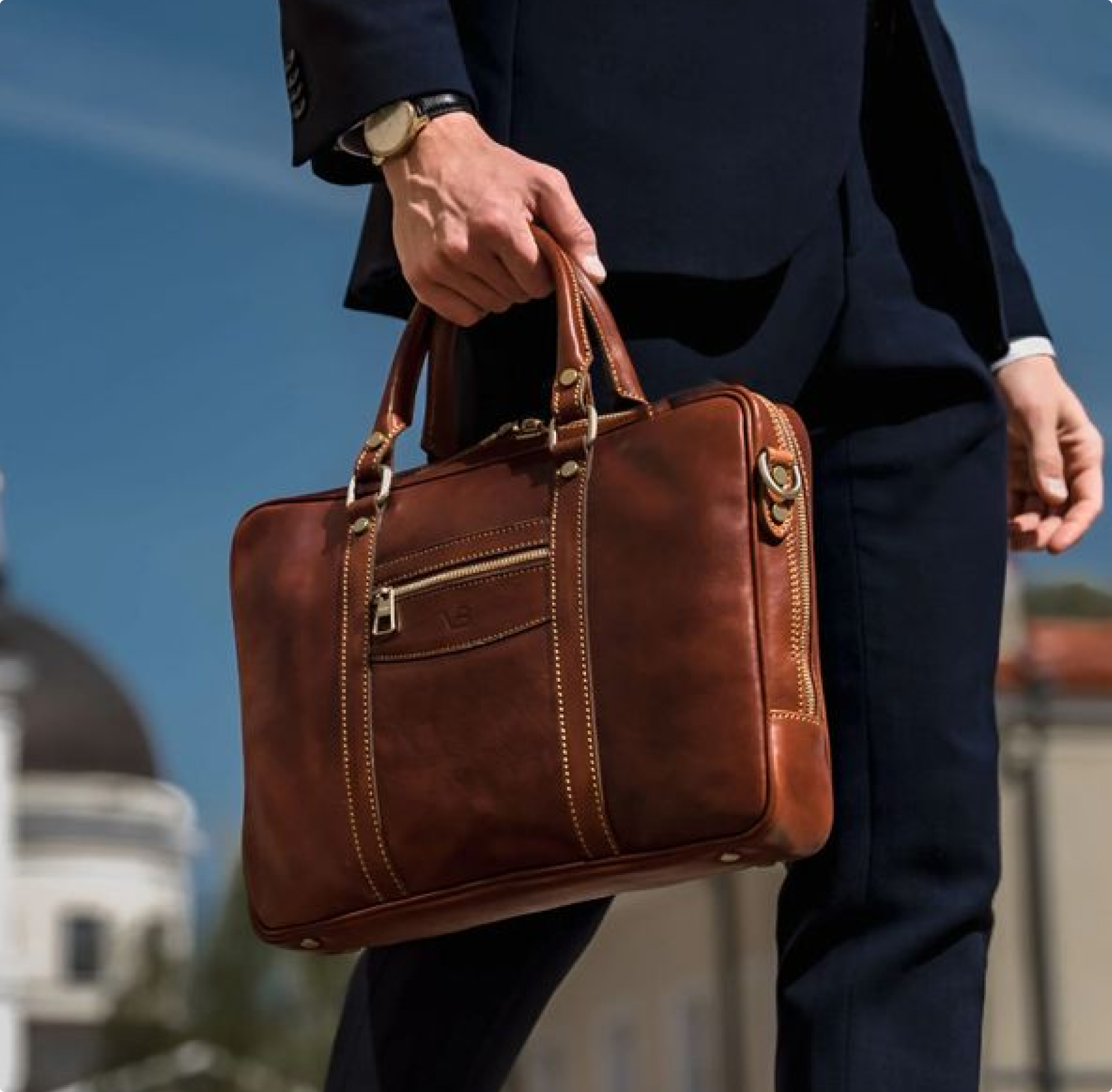Leather, a material known for its durability, flexibility, and timeless appeal, plays an integral role in fashion, culture, and everyday utility. Its manufacturing process is both an art and a science, reflecting a blend of ancient techniques and modern innovations. This blog delves deep into the world of leather, exploring its creation, types, and significance, alongside considering the environmental impacts and alternatives that are shaping its future.
What is Leather Manufacturing?
Leather manufacturing transforms animal hides or skins into leather through a series of intricate processes. This transformation is not merely a matter of processing but an art form that has been refined over millennia. The essence of leather manufacturing lies in preserving the natural beauty and resilience of the hide while enhancing its properties for various applications, from fashion to functional products.
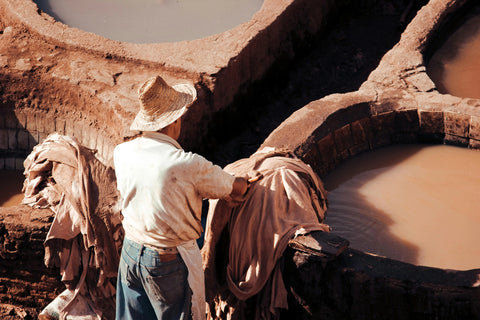
Leather Manufacturing Process: How Leather is Made?
Leather is manufactured through a process that involves several stages. Here is a general overview of the leather manufacturing process:
The Prelude: Getting the Leather Ready
The adventure starts with prepping the hides or skins, ensuring they're clean and primed for transformation. Here's how we do it:
Splash and Soak: First up, a good old soak. This isn't just any bath, though; it's a thorough cleansing to strip away dirt, blood, and other undesirables. It's like a spa day for the hides, getting them supple and ready for what's next.
Liming: Imagine giving the hides a shave and a detox, all in one. Using lime to bid farewell to hair, flesh, and fat. It's a bit of a wait but stirring them in lime-filled vats makes all the difference.
Deliming: Next, it's time to wash off the limey leftovers, ensuring the hides are clean and balanced.
Bating: Here, bring in enzymes, the secret softeners, prepping the hides with the tenderness they'll need for the tanning stage.
Pickling: Think of this as the hide's preservative phase, a salty-acid bath that sets the stage for the transformative tanning process.
Tanning: The Heart of the Matter
Tanning is where the real magic happens, turning hides into leather that's tough yet elegant. Here's a peek at the methods:
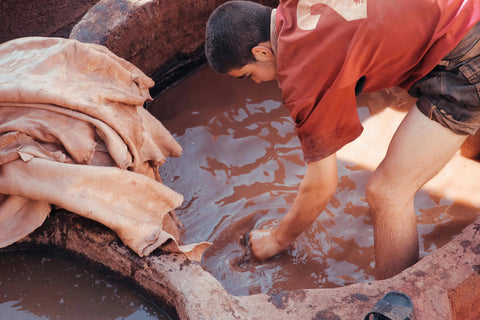
Vegetable Tanning: A time-honoured technique that employs tannins from nature's pantry to achieve a stiff, naturally hued leather. It's a slow dance with nature that enriches the leather with character.
Chrome Tanning: The fast track to soft, colorful leather, thanks to the wonders of chromium salts. It's the go-to for creating leather that's as versatile as it is vibrant.
Synthetic Tanning: The new kid on the block, using man-made marvels to speed up the tanning process, making it efficient and increasingly popular.
From pre-tanning preps like salt and acid baths, through the core tanning stage, to neutralizing and finally, finishing touches, each step is pivotal. We dye, buff, and coat the leather, ensuring it stands out in durability, texture, and looks.
Dyeing: The Colorful Character
Dyeing introduces the leather to its vibrant personality, infusing it with hues that capture the imagination. Here’s how:
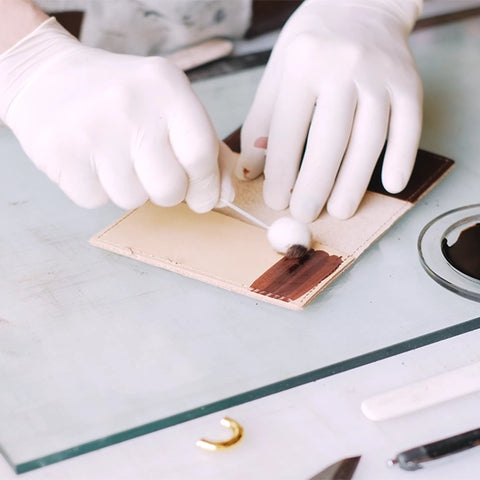
Prep and Prime: First, clean the slate, removing any barriers to the dye's embrace.
Color’s Caress: Whether by spray, dip, or brush, the dye waltzes with the leather, infusing it with vibrant life.
Fix and Finish: A fixative seals the deal, ensuring the color stays true, followed by finishing touches that buff, polish, and protect, amplifying the leather's charm.
Finishing: The Final Flourish
Finishing is where the leather dons its final splendor, emerging as a masterpiece of texture, appearance, and resilience:
Buff’s Kiss: Smoothing away imperfections, buffing gives the leather a flawless complexion.
Embossing Elegance: Patterns and designs pressed into the leather add texture and character, a testament to its journey.
Coat of Armor: Protective coatings ward off the elements, while also bestowing a glossy or matte finery.
Polished to Perfection: A final polish to bring out the leather’s lustrous beauty, ready to dazzle the world.
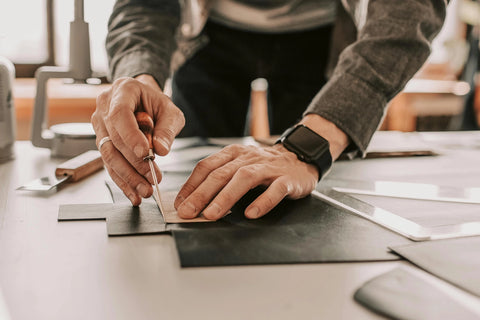
Crafting the Masterpiece: Cutting and Sewing
Precision Cuts: From tracing patterns to laser-guided precision, the leather is sculpted into its destined shape.
Seamless Stitches: With needle and thread, pieces unite in durable and decorative seams, each stitch a testament to craftsmanship.
The Final Touch: Edges refined, hardware added, each detail contributes to the symphony of the finished piece.
From the first splash to the final polish, the journey of leathercraft is a testament to transformation, skill, and artistry, turning hides into treasures that last lifetimes.
How Are Leather's Color and Texture Created and Modified?
The magic of dyeing and finishing brings leather's color and texture to life. Aniline dyes offer a transparent finish, highlighting the natural surface, while semi-aniline dyes provide a balance between color consistency and natural textures. Finishing processes, ranging from embossing to coating, further refine the leather's appearance and durability, allowing for a wide array of textures and finishes.
What Types of Leather Are There, and How Are They Different?
Leather comes in various types, each with its characteristics and uses:

Full-Grain Leather: The highest quality, showing the hide's natural texture and imperfections. It's durable and ages well, used in luxury products.
Top-Grain Leather: Slightly refined, with the top layer sanded to remove imperfections. It's flexible and widely used in high-end goods.
Split Leather: Made from the lower layers of the hide, it's more affordable but less durable, often used in suede production.
Suede: Soft and velvety, derived from the underside of the hide or split leather, popular in clothing and accessories.
Bonded Leather: Made from leftover hide pieces bonded together, it's the least expensive but lacks the durability and quality of other types.
How Can One Maintain and Extend the Life of Leather Products?
Proper care is essential to maintain the beauty and longevity of leather products. Regular cleaning, conditioning, and appropriate storage can protect leather from wear and extend its life. Advice on leather care emphasizes the importance of understanding the specific needs of different types of leather, ensuring that products remain in excellent condition for years to come.
What Is the Impact of Leather Production on the Environment?
Leather production, particularly the tanning process, poses significant environmental challenges, including water consumption, chemical pollution, and greenhouse gas emissions. The industry is exploring more sustainable practices, such as using eco-friendly tanning agents and recycling waste, to mitigate these impacts. These efforts are crucial for balancing leather's cultural and economic significance with the need for environmental stewardship.
What Are Some Leather Alternatives and Why Are They Important?
For centuries, traditional leather has been a staple in our wardrobes and homes. However, the tide is turning as environmental and ethical considerations bring alternative materials into the spotlight. These innovative options are not just about keeping up with trends; they're a testament to human ingenuity and our commitment to a more sustainable future. Let's embark on a journey to explore these alternatives, understanding their significance in today's world.
PVC Leather: Picture a material that's as sleek as it is practical. That's PVC leather for you. Crafted by blending plasticizers with PVC, this variant achieves a flexibility that's both appealing and functional. Its waterproof quality and glossy appearance make it a standout, although it trades off some breathability for these features. The real charm of PVC, however, lies in its unfazed ability to resist water, making it a go-to for certain applications.
PU Leather: Imagine the texture and allure of genuine leather, minus the guilt. PU leather achieves this feat by marrying a base fabric like polyester with a soft coating of polyurethane. The result? A material that's so close to real leather in feel and appearance, it's become a darling in the realms of fashion and furniture.
Plant-Based Leather: The earth offers us some remarkable resources, and when it comes to sustainable leather, plants are stepping into the limelight. Innovations like Mycelium leather, derived from mushrooms, and Pinatex, made from pineapple, are not just eco-friendly; they're biodegradable, marking a huge leap towards sustainability.
Recycled Leather: There's something incredibly noble about giving old leather a new lease on life. Recycled leather takes pre-loved materials, breaks them down, and transforms them into new treasures. This process retains the luxurious feel of leather while dramatically cutting down on environmental impact.
Cork Leather: Hailing from the bark of cork oak trees, cork leather is a testament to nature's genius. It's not only lightweight and waterproof but also a champion of sustainability. Harvesting cork doesn't harm the tree, making this material as kind to the planet as it is innovative.
In this era of conscious consumption, these leather alternatives are not just materials; they're a statement about the kind of future we want to create. Let's embrace them with open arms and minds.
What Role Does Leather Play in Fashion and Culture?

Leather's impact on fashion and culture is profound. Its versatility, durability, and aesthetic appeal have made it a staple in wardrobes and collections around the world.
From luxury handbags to rugged boots, leather embodies a blend of tradition and modernity, luxury, and utility. Its role in fashion is not just about style but about crafting identities and narratives, making it a material with both a rich history and a dynamic future.
FAQs
Q: Can vegan leather be as durable as real leather?
A: While some high-quality vegan leathers can approach the durability of real leather, they often vary in longevity and wear over time.
Q: How can I tell if a leather product is of high quality?
A: Look for uniform coloring, a smooth texture without excessive imperfections, and the type of leather used, with full-grain leather generally being the highest quality.
Q: Is leather waterproof?
A: Leather is not inherently waterproof, though it can be treated with waterproofing agents. Prolonged exposure to water can damage the leather, so proper care is important.
In exploring the journey of leather from hide to handbag, we uncover the complexities and craftsmanship that define this enduring material. As the industry evolves, balancing tradition with innovation, and addressing environmental concerns, leather's legacy as a symbol of quality and resilience continues to inspire and challenge designers, manufacturers, and consumers alike.
Shop Our Leather Collection of:
Travel Bag | Messenger Bag | Women Bags | Journals | Portfolios | Toiletry Bags | Satchels | Pencil Cases | Knife Roll
MORE ARTICLES
Luxury Unleashed: The Ultimate Guide to Leather Watch Cases
Which Leather is More Durable and Best for Bags?
Leather vs Suede vs Canvas vs Faux Leather: Which Material is Right for You?
